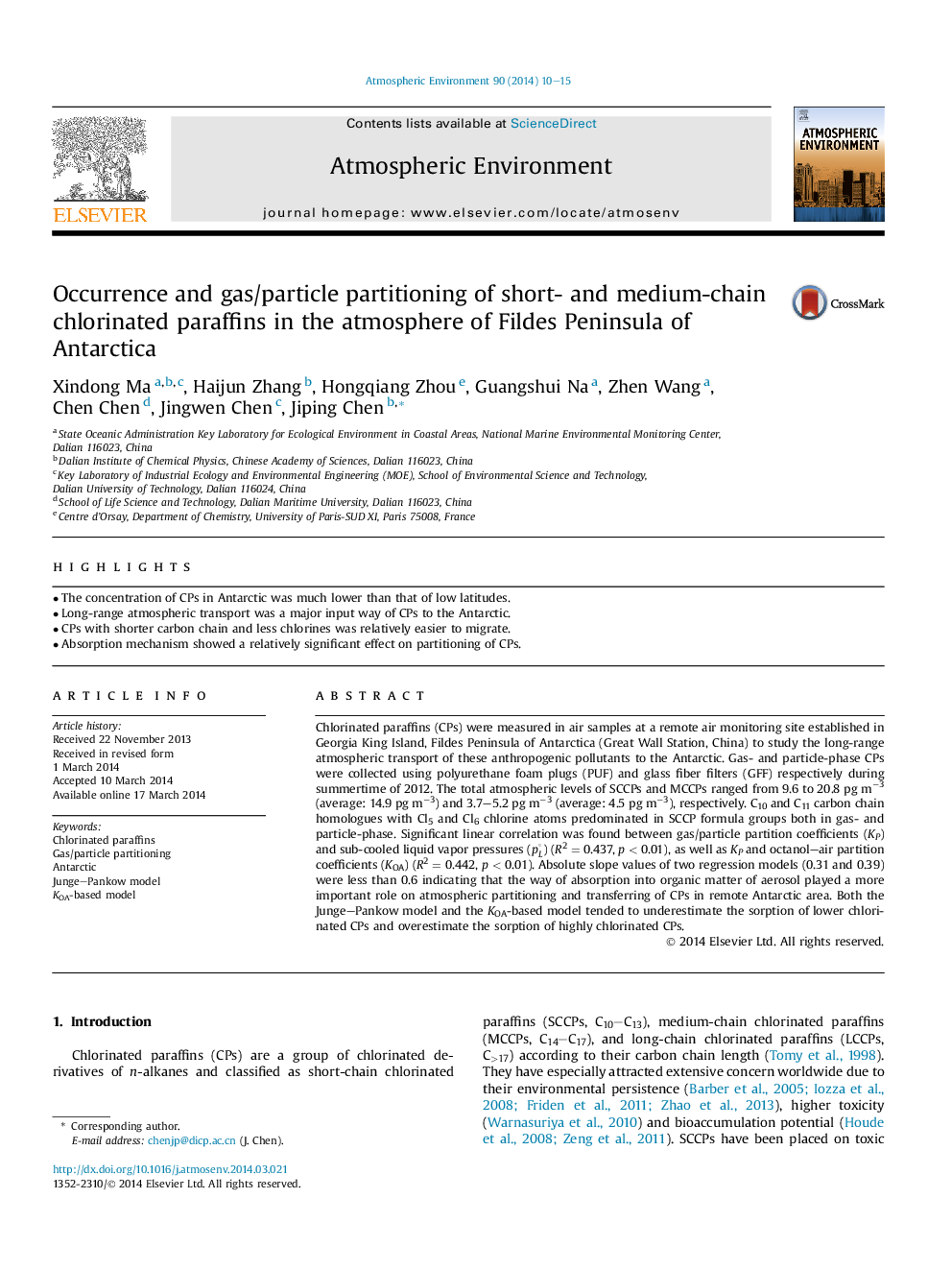| Article ID | Journal | Published Year | Pages | File Type |
|---|---|---|---|---|
| 6339996 | Atmospheric Environment | 2014 | 6 Pages |
Abstract
Chlorinated paraffins (CPs) were measured in air samples at a remote air monitoring site established in Georgia King Island, Fildes Peninsula of Antarctica (Great Wall Station, China) to study the long-range atmospheric transport of these anthropogenic pollutants to the Antarctic. Gas- and particle-phase CPs were collected using polyurethane foam plugs (PUF) and glass fiber filters (GFF) respectively during summertime of 2012. The total atmospheric levels of SCCPs and MCCPs ranged from 9.6 to 20.8 pg mâ3 (average: 14.9 pg mâ3) and 3.7-5.2 pg mâ3 (average: 4.5 pg mâ3), respectively. C10 and C11 carbon chain homologues with Cl5 and Cl6 chlorine atoms predominated in SCCP formula groups both in gas- and particle-phase. Significant linear correlation was found between gas/particle partition coefficients (KP) and sub-cooled liquid vapor pressures (pL°) (R2 = 0.437, p < 0.01), as well as KP and octanol-air partition coefficients (KOA) (R2 = 0.442, p < 0.01). Absolute slope values of two regression models (0.31 and 0.39) were less than 0.6 indicating that the way of absorption into organic matter of aerosol played a more important role on atmospheric partitioning and transferring of CPs in remote Antarctic area. Both the Junge-Pankow model and the KOA-based model tended to underestimate the sorption of lower chlorinated CPs and overestimate the sorption of highly chlorinated CPs.
Related Topics
Physical Sciences and Engineering
Earth and Planetary Sciences
Atmospheric Science
Authors
Xindong Ma, Haijun Zhang, Hongqiang Zhou, Guangshui Na, Zhen Wang, Chen Chen, Jingwen Chen, Jiping Chen,
